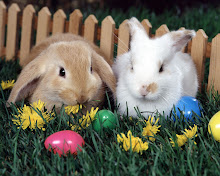Most of us are probably familiar with the quintessential image of the rabbit-a fluffy, cuddly white bunny delivered into the arms of delighted children on Easter morning, surrounded by sweets and colored eggs. Unfortunately, this picture-perfect holiday symbol that has placed many a pet rabbit into a less-than-ideal situation. Taking care of a pet rabbit is not a holiday novelty; it's agreeing to assume full responsibility for the needs of a living creature. If it sounds like welcoming a rabbit into your home is serious business requiring lots of thought and planning, that's because it is! But it also offers an exciting, unique pet ownership experience-for those who are willing to put in the time and effort to learn the ins and outs of pet rabbit care.
Rabbits require a certain kind of home environment in order to thrive. Contrary to the popular image, they are not suitable pets for young children, even if the intention is to teach responsibility by allowing the child to care for a pet rabbit. Rabbits frighten easily and are extremely fragile when it comes to being handled. A sudden noise or movement can actually frighten them to death, while one instance of mishandling could break bones or damage internal organs. Therefore, a home full of running, yelling children is not a happy home for a rabbit. Rabbits need to feel secure at all times, so a large part of taking care of a pet rabbit is offering it a fairly constant atmosphere of peace and quiet, and a major component of offering that secure atmosphere is providing your rabbit with proper housing.
There are two basic options when it comes to rabbit-keeping: to cage or not to cage. Traditionally, rabbits have been kept in outdoor cages (called a "hutches") with a wire bottom and sides, a solid top, and a solid wooden nesting box. An outdoor hutch is still a viable option, provided serious effort is applied to making the hutch completely weatherproof. For those who truly wish to keep their rabbits inside, a large cage similar to a hutch can be integrated into the household, and for those who truly wish to live with their rabbits, a rabbit can be kept much as you'd keep a cat-running free in the house. Rabbits love to be near "their people," and if given the chance, will follow you around as you do your daily chores. They are easily litter box trained and are relatively tidy overall. For safety's sake, it's a very good idea to confine your rabbit to a single, rabbit-proofed room, unless he or she is under close supervision. Many people keep their rabbits in an empty bedroom or in the kitchen by blocking off the door with a baby gate. Rabbit-proofing involves ridding the area of chew-ables such as books, papers, toys, or anything else you don't want gnawed-especially electrical cords. You should also ensure that there are no small spaces for your rabbit to squeeze into.
Whether you decide to keep your rabbit in a cage, let him roam freely about your kitchen, or a combination of both, the other major consideration in taking care of a pet rabbit is ensuring that fresh water and proper food are available at all times. Water can either be made available in a heavy dish or in a cage-hanging water bottle. A rabbit's diet should consist mainly of formulated rabbit pellets, a little fresh hay, and treats such as carrots, apples, and leafy greens (not iceberg lettuce!). Rabbits will eat just about anything, but that doesn't mean you should feed them whatever they desire. They have delicate digestive systems that are easily thrown off balance by the sudden introduction of foreign foods, so try to keep your rabbit's diet as simple and junk-free as possible.
Now that you've learned how to care for a pet rabbit, it's time to find your new best friend. While pet stores and breeders are always an option, consider checking to see if there's a rabbit rescue near your home, or call your local animal shelters to ask if they have any abandoned rabbits available for adoption. Whatever your decision, make sure it's one that promises your new friend he'll have a forever home with you, and he'll pay you back tenfold with unending affection and companionship.
About The Author: Barry S. Mcgee is a pet enthusiast. His site at:http://www.squidoo.com/petcareonline provides advice and information on all aspects of pet care for all types of pets including dogs, cats, ferrets and others and makes it easier for pet owners to choose the best solution for their companion's care. For answers to all your pet care questions, please visit: http://www.squidoo.com/petcareonline |




